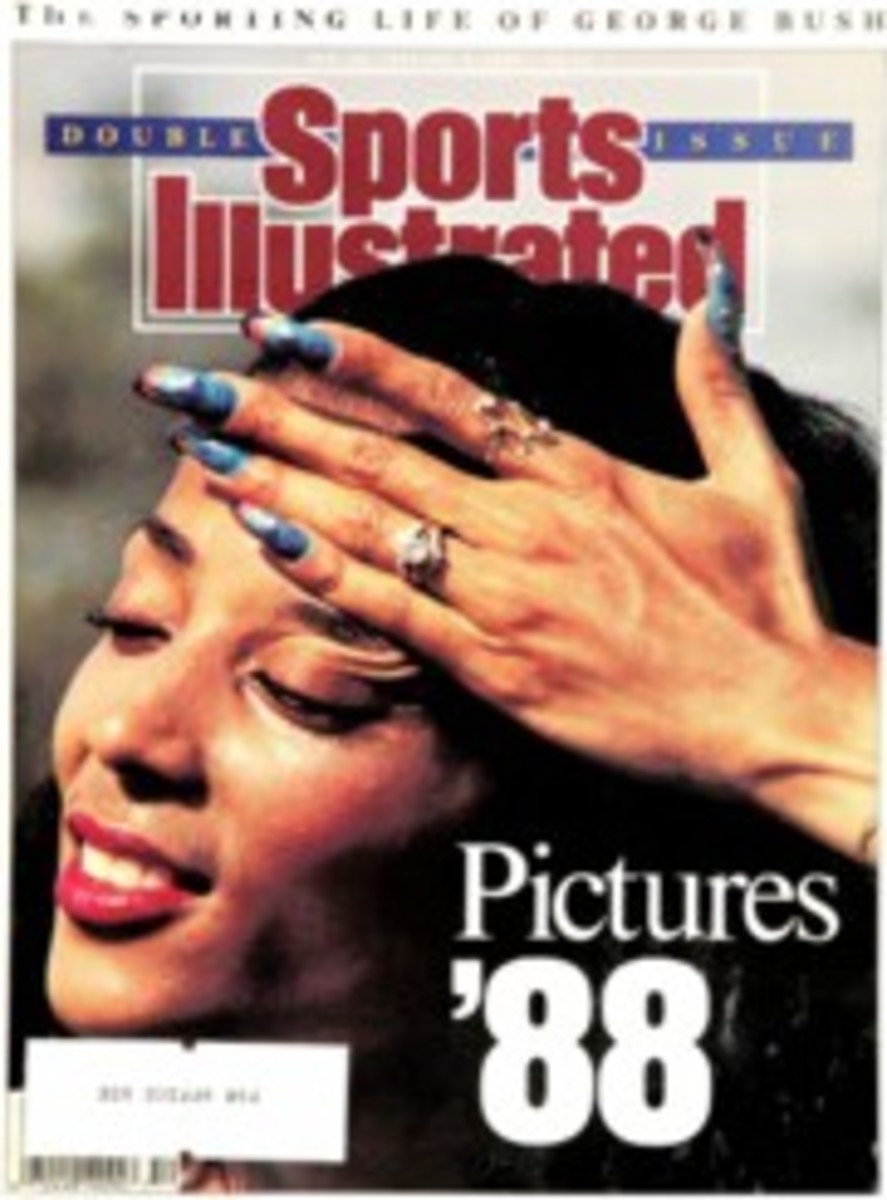
MIAMI DOLPHINS VS. SAN FRANCISCO 49ERS SUPER BOWL XIX MIAMI BITES THE DUST The Dolphins had Dan Marino and his incredible passing stats, but the Niners figured out a way to pressure him, and it worked
THE SAN FRANCISCO 49ers had the luxury of playing Super Bowl XIX
in their backyard, Stanford Stadium, and practicing at their own
facility. The Miami Dolphins had a second-year quarterback named Dan
Marino, who had put up numbers never seen before: 48 touchdown
passes, 5,084 yards -- incredible statistics. The numbers were
mesmerizing, seductive, and they almost obscured the changes that
were taking place on Don Shula-coached teams.
The Dolphins had been a running team in their three Super Bowl
years in the 1970s. Larry Csonka was long gone, but even their most
recent Super Bowl squad, just two years earlier, had been geared to
the power blasts of fullback Andra Franklin. Now, however, the
running game had eroded. The same thing had happened to the defense.
The No Names and the Killer B's were all part of the past. Flash had
replaced substance, but what the heck difference did that make? Miami
still was taking a 14-2 record into the Super Bowl against San
Francisco.
The next season I was talking to Shula before a game, and I asked
him if he was really comfortable with this kind of club. I said he
seemed like a coachman riding behind a team of wild horses; all he
could do was hold on tight. He got annoyed.
''We reached the Super Bowl with this kind of team,'' he said.
''What do you want us to do, throw 15 passes a game?'' No, but the 50
passes Marino attempted in Stanford Stadium wasn't what I wanted
either. So what if he completed 29 of them and set a Super Bowl
record? For all that he got only one touchdown through the air, and
he was intercepted twice.
Maybe it's a cliche, but when things come too easily, toughness
seems to suffer. The Dolphins have never recaptured the ability to
run the ball, nor have they rebuilt their defense. Anything less than
a spectacular year by Marino and his receivers turns them into an
average team.
I didn't have that much foresight back in January 1985, when I was
trying to figure the 49ers-Dolphins matchup, but I had a lot of
record books, and two Miami statistics jumped out at me. First, the
Dolphins were No. 1 in the NFL in passing; no one else was even
close. Never before had the top passing team in the NFL been in a
Super Bowl. A lot of mediocre passing teams had made it -- even won
it -- but never No. 1. Second, they were 19th in the league in
defense. In the old days the top-ranked defensive teams practically
always made the Super Bowl. Defense gets you there; that is a given.
Was there ever another team that finished in the bottom half of the
defense stats and made it to the Super Bowl? I started checking. I
hoped that this would be a first. It wasn't. It was a second. The
Oakland team of Super Bowl XI finished 16th. But then the Raiders
played Minnesota, everyone's patsy.
The 15-1 Niners, with Joe Montana, were a good passing team, too,
and they had something else -- balance. Roger Craig and Wendell Tyler
could run the ball. Their rushing game was No. 3 overall in the NFL,
and it was certainly better than when they beat Cincinnati with Ricky
Riccardo Patton and Earl Cooper as ball carriers. Their defense was
solid enough, and they could get after the passer.
That was it, the key: the ability to put a rush on Marino.
Otherwise we would see one of those 50-45 shootouts that anyone could
win. But Marino's sack totals were just as amazing as his passing. He
had thrown the ball 564 times that season and had been dusted only
13. How do you sack a guy who gets rid of the ball in less than two
seconds?
When Miami played Pittsburgh for the AFC title, I put a stopwatch
on Marino. Joe Namath had the quickest release in football in the
'60s, and he used to say that most of the Jets' patterns were
designed for a 2.4- to 2.7-second release. The deep patterns, of
course, took longer.
Pittsburgh tried blitzing Marino in the first half. He threw a
40-yard touchdown pass to Mark Clayton in 2.5 seconds, a 41-yarder to
Mark Duper in 2.3 and a 24-yard touchdown to Jimmy Cefalo in 1.5
(that one was called back). In the second half the Steelers dropped
back into coverages and gave Marino more time. Which he took. He
threw for two more touchdowns.
''How do you get to a quarterback who gets rid of the ball in 1.5
seconds?'' I asked Bill McPherson, the Niners' defensive line coach.
His face went ashen.
''In what?'' he said. ''You've got to be kidding.''
Well, the 49ers did it. San Francisco got to Marino four times. It
was the first time in his career that he would suffer so many sacks,
and it has only happened to him twice since. The sacks came after Joe
Montana and the 49er offense carved up the Dolphin defense, as
everyone figured they would, and forced Marino to play catch-up.
After the game, a 38-16 Niner blowout, I begged McPherson to lay
out his rush scheme for me. I wouldn't write it, I wouldn't tell
anybody, I simply had to know. He smiled and looked mysterious and
mumbled something about good gut pressure, pressure up the middle.
Well, yeah, I could see that. The key to it was Gary (Big Hands)
Johnson, whom the Niners got from San Diego and restored to his
natural position, defensive tackle, after the Chargers messed him up
by moving him outside. But there was something about the scheme
itself, the inside rush lanes, that I couldn't exactly pin down. It
still haunts me.

